Abstract
OBJECTIVES. Community-based research on violence against women typically focuses on marital arguments rather than on resulting injuries. This study investigated patterns of victimization, violence perpetration, and injury in marital arguments. METHODS. Data from the National Survey on Families and Households and binomial and multinomial logit models were used to analyze characteristics of those who experienced physical violence, as well as to determine who was the perpetrator and who was the victim. RESULTS. Men and women reported similar behaviors during verbal arguments. Young persons, urban dwellers, the less educated, those with low incomes, and Blacks were more likely to report that there had been physical violence in their marriages in the past year. Ethnicity, income, education, and number and age of children at home were not associated consistently with injury of the wife, the husband, or both. CONCLUSIONS. Persons who report physical violence in their marriage are very similar to those who are at increased risk of interpersonal violence in general. The co-occurrence of street and other nonfamily violence with spousal violence may be a fruitful area for future research.
Full text
PDF
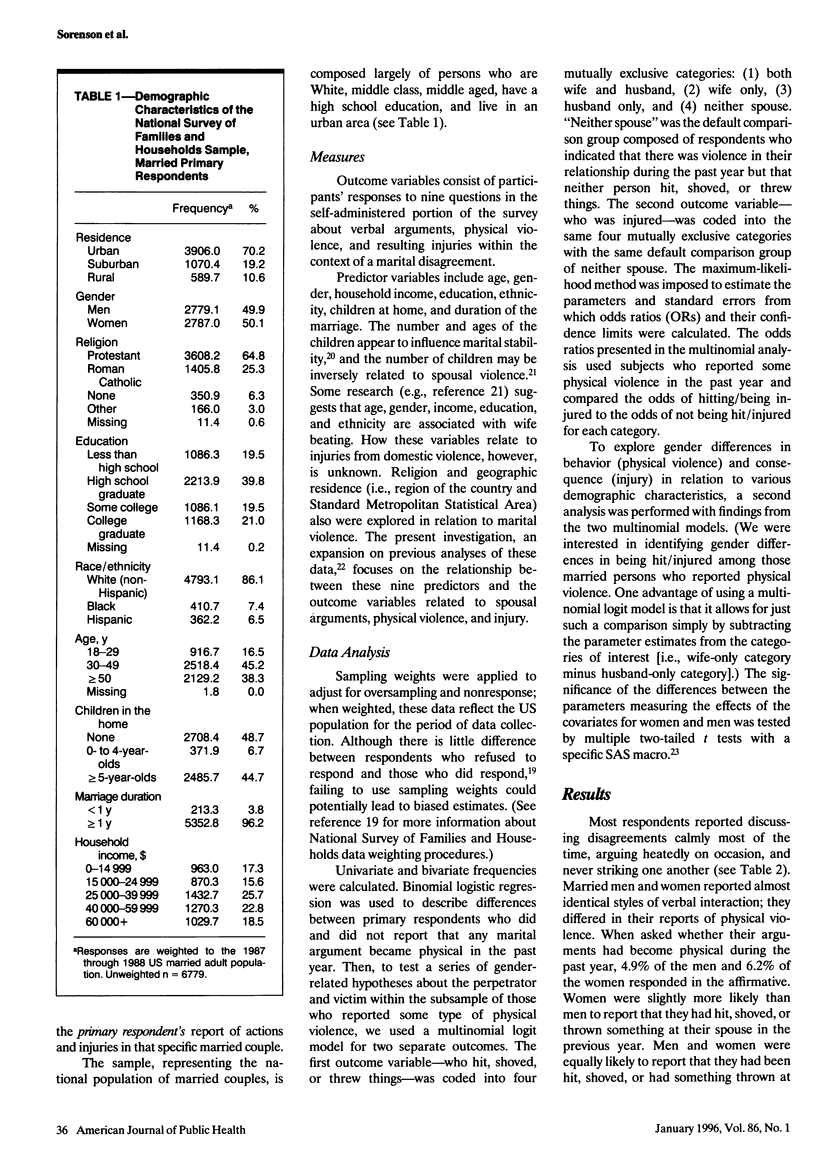
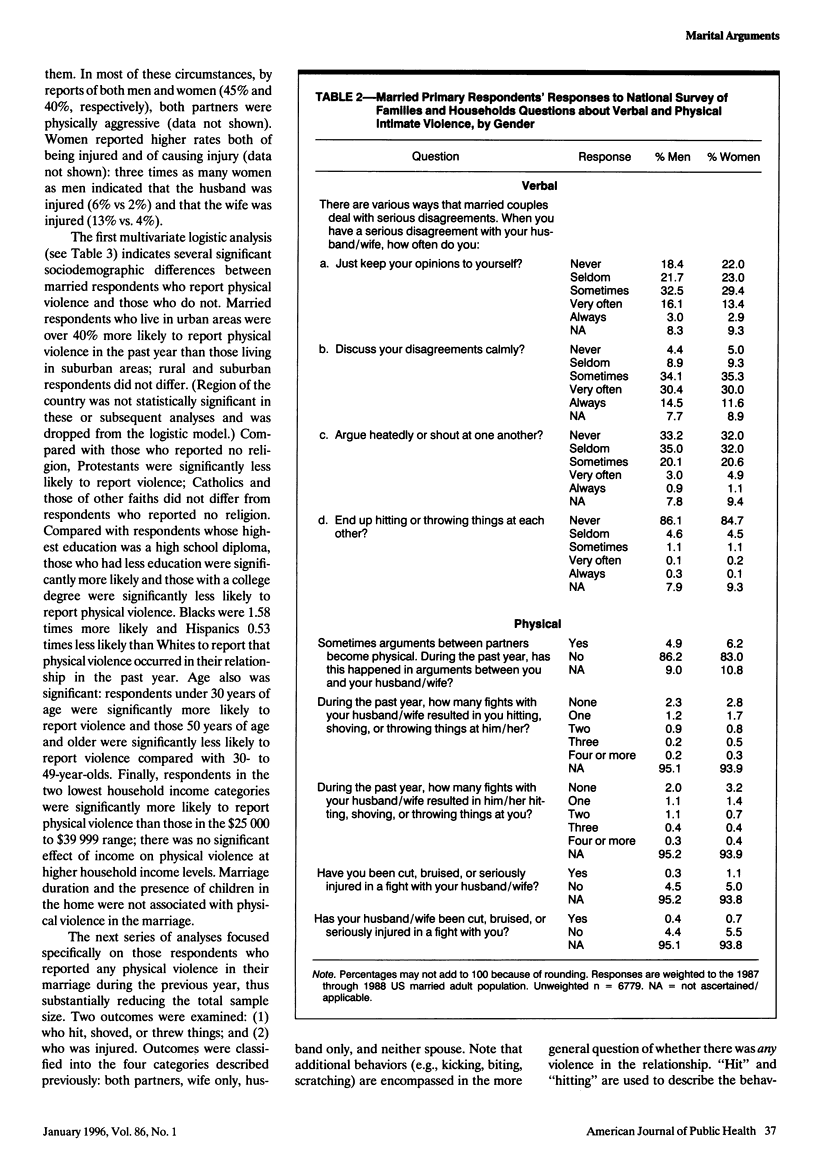
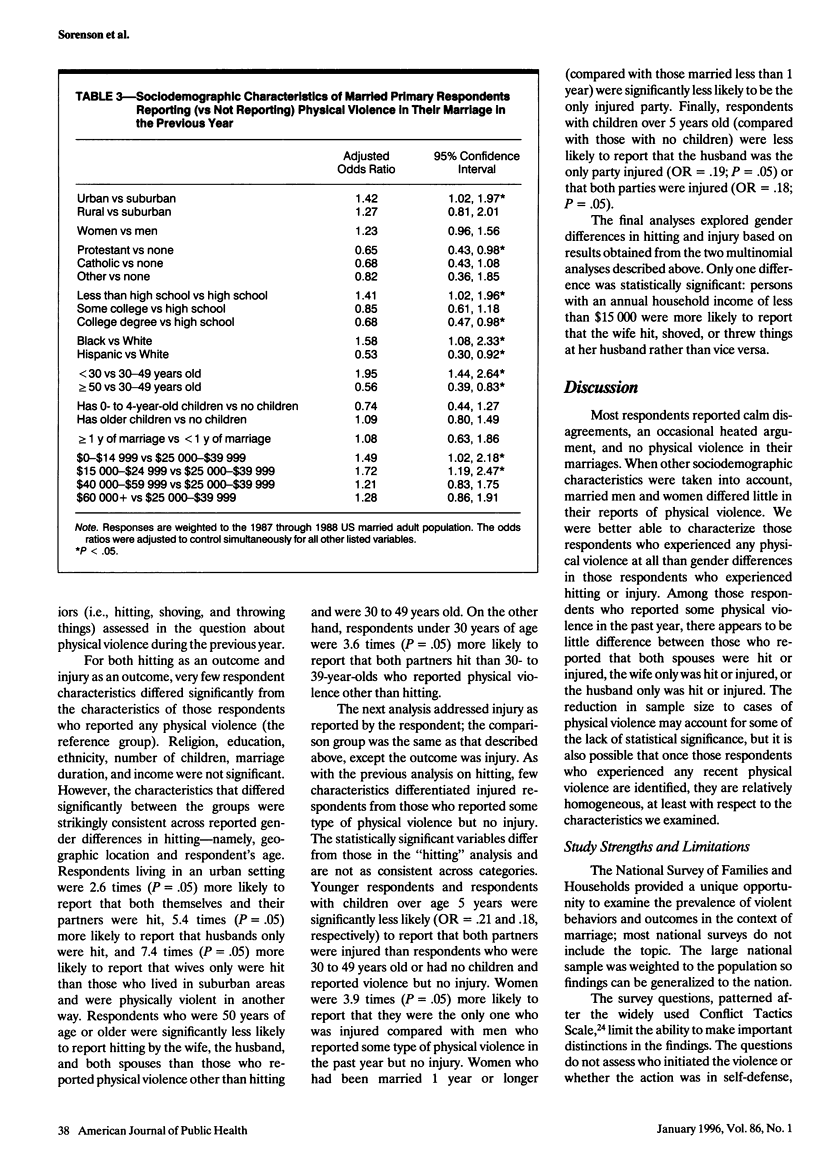
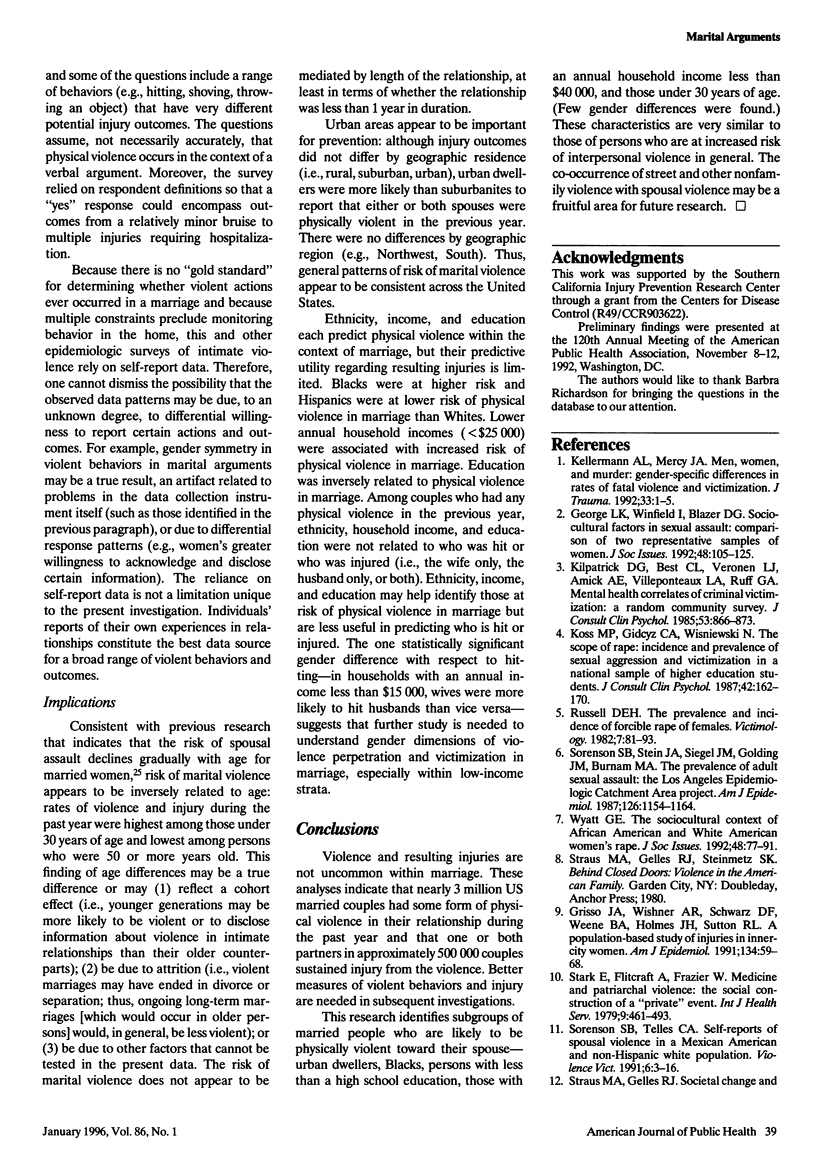
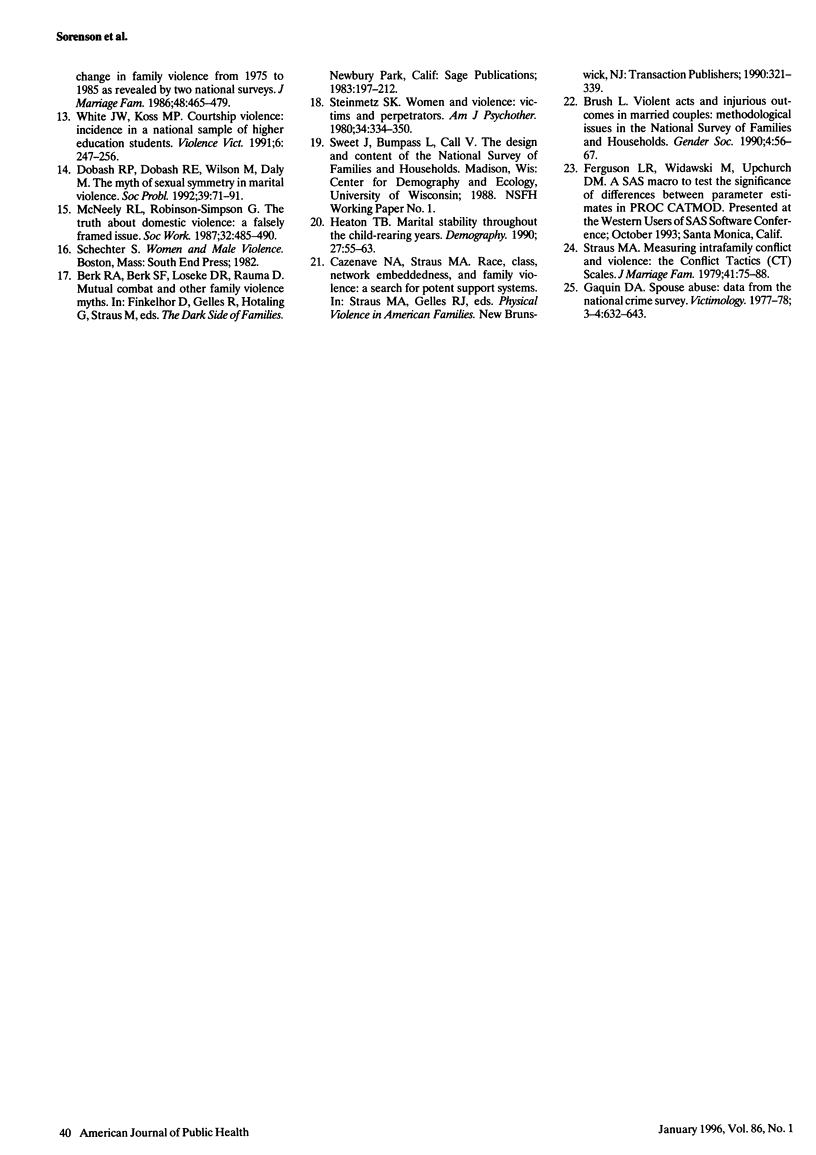
Selected References
These references are in PubMed. This may not be the complete list of references from this article.
- Grisso J. A., Wishner A. R., Schwarz D. F., Weene B. A., Holmes J. H., Sutton R. L. A population-based study of injuries in inner-city women. Am J Epidemiol. 1991 Jul 1;134(1):59–68. doi: 10.1093/oxfordjournals.aje.a115993. [DOI] [PubMed] [Google Scholar]
- Heaton T. B. Marital stability throughout the child-rearing years. Demography. 1990 Feb;27(1):55–63. [PubMed] [Google Scholar]
- Kellermann A. L., Mercy J. A. Men, women, and murder: gender-specific differences in rates of fatal violence and victimization. J Trauma. 1992 Jul;33(1):1–5. [PubMed] [Google Scholar]
- Kilpatrick D. G., Best C. L., Veronen L. J., Amick A. E., Villeponteaux L. A., Ruff G. A. Mental health correlates of criminal victimization: a random community survey. J Consult Clin Psychol. 1985 Dec;53(6):866–873. doi: 10.1037//0022-006x.53.6.866. [DOI] [PubMed] [Google Scholar]
- Koss M. P., Gidycz C. A., Wisniewski N. The scope of rape: incidence and prevalence of sexual aggression and victimization in a national sample of higher education students. J Consult Clin Psychol. 1987 Apr;55(2):162–170. doi: 10.1037//0022-006x.55.2.162. [DOI] [PubMed] [Google Scholar]
- Sorenson S. B., Stein J. A., Siegel J. M., Golding J. M., Burnam M. A. The prevalence of adult sexual assault. The Los Angeles Epidemiologic Catchment Area Project. Am J Epidemiol. 1987 Dec;126(6):1154–1164. doi: 10.1093/oxfordjournals.aje.a114753. [DOI] [PubMed] [Google Scholar]
- Sorenson S. B., Telles C. A. Self-reports of spousal violence in a Mexican-American and non-Hispanic white population. Violence Vict. 1991 Spring;6(1):3–15. [PubMed] [Google Scholar]
- Stark E., Flitcraft A., Frazier W. Medicine and patriarchal violence: the social construction of a "private" event. Int J Health Serv. 1979;9(3):461–493. doi: 10.2190/KTLU-CCU7-BMNQ-V2KY. [DOI] [PubMed] [Google Scholar]
- Steinmetz S. K. Women and violence: victims and perpetrators. Am J Psychother. 1980 Jul;34(3):334–350. doi: 10.1176/appi.psychotherapy.1980.34.3.334. [DOI] [PubMed] [Google Scholar]
- White J. W., Koss M. P. Courtship violence: incidence in a national sample of higher education students. Violence Vict. 1991 Winter;6(4):247–256. [PubMed] [Google Scholar]


